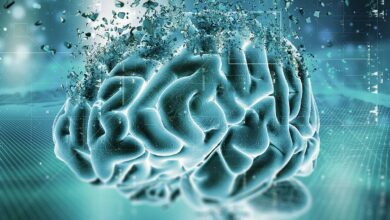Cannabinoids are a group of chemical compounds that are found both in the Cannabis Sativa plant (phyto-cannabinoids), and the human body (endo-cannabinoids). There are many different cannabinoids, but the two most well-known are THC and CBD.
Cannabinoids have been shown to have many therapeutic benefits, including reducing inflammation, relieving pain, and treating seizures. In this blog post, we will discuss cannabinoids in more detail and explore how they can help you.
What do cannabinoids do in the body?
Cannabinoids interact with the cannabinoid receptors that are part of our body’s endocannabinoid system (ECS).
There are three types of cannabinoids:
- endocannabinoids, which are produced by the body.
- phytocannabinoids, which are found in Cannabis Sativa plants.
- synthetic cannabinoids, which are created in a lab.
Cannabinoid receptors are found throughout the body. They play a role in many different processes, including pain sensation, memory, mood, and appetite. Cannabinoids interact with these receptors to produce their effects.
Exactly how cannabinoids work in the body is still not fully understood. We know it involves regulation of neurotransmitter release and activation of receptors on cells in the brain and spinal cord. It also involves interactions with other molecules in the endocannabinoid system.
What is the endocannabinoid system?
The endocannabinoid system is a biochemical system found in the human body. It is responsible for the regulation of various physiological processes, including appetite, pain sensation, mood and memory.
Everybody has an endocannabinoid system, whether they use cannabis or not.
The system is activated by endogenous cannabinoids (endocannabinoids), which are naturally produced in the body as well as by cannabis plants.
Cannabinoid receptors
The primary cannabinoid receptor in the body is CB1, which is found mainly in the central nervous system (the brain and spinal cord). CB2 receptors are found mainly in the peripheral nervous system and immune system.
The difference between THC and CBD
The most well-known cannabinoid is THC, which is the psychoactive compound found in cannabis plants. THC interacts with cannabinoid receptors in the brain to produce its effects, including the “high” that people feel when they smoke or eat cannabis.
It also has many medical properties. THC can be a strong sedative and the THC-based medicine ©Sativex is licensed worldwide for the spasticity in multiple sclerosis.
In contrast, CBD is a non-psychoactive compound that interacts differently with the cannabinoid receptors in the brain and will not make you feel “high”. It has been shown to have anti-inflammatory, analgesic and antioxidant properties.
The Entourage Effect
The entourage effect is the idea that all of the components in cannabis; the cannabinoids, flavonoids, and terpenes; interacting together, have a greater therapeutic value ithan just one single cannabinoid alone.
Just like an orchestra, where each instrument contributes to the whole of the symphony. The whole of the cannabis plant is greater and more powerful than the sum of its parts.
This is why most “CBD” oils actually contain many different cannabinoids, for a better effect. The exception to this is THC, which is obviously regulated in many countries. For this reason there are Broad Spectrum and Full Spectrum oils available, with Full Spectrum containing up to 0.2% THC, whereas Broad Spectrum contains either none, or miniscule amounts.
Should you want just pure CBD, you need to buy a CBD isolate, which contains literally just CBD.
Cannabinoids contained in the cannabis plant
At the present time we know of 113 different cannabinoids contained in the cannabis plant, however there may be more.
It is important to note that THC is the only plant cannabinoid that is known to have an intoxicating effect.
Here is a list of the big players and what they do:
CBG: Cannabigerol
This is the mother cannabinoid, the chemical precursor to THC, CBD and CBC. It is non-psychoactive and a study in 2015 found that it had neuroprotective properties in mice. It may also have analgesic properties.
THC: Δ–tetrahydrocannabinol
Tetrahydrocannabinol is cannabis’s most infamous compound – the psychoactive cannabinoid that gets you “high”. Despite the many “negative” effects, THC has a very high therapeutic value and is useful for a variety of health conditions. It can have a strong sedative effect and can relieve pain. In countries where it is legal, high THC medical marijuana is prescribed for many chronic conditions. Worldwide, the EU and FDA approved medicine ©Sativex is licensed worldwide for the spasticity in Multiple Sclerosis.
It can be useful in cancer treatment as it reduces nausea and increases appetite. It has 20 times the anti-inflammatory strength of aspirin, and a UK National Health Service based trial is beginning this year to investigate claims that it can reduce tumours.
CBD: Cannabidiol
This cannabinoid has been all over the news recently. It is non-psychoactive, but has many medicinal benefits; it’s great for reducing anxiety and stress and can help people suffering from insomnia by increasing both quantity and quality of sleep. It helps reduce seizures, it is a strong anti-inflammatory and analgesic and many people use it to treat pain.
CBD oil is becoming very popular because it doesn’t get you high like THC does.
CBC: Cannabichromene
This cannabinoid is also not psychoactive, but creates a feeling of well-being and can reduce anxiety.
In studies, it has been shown to reduce inflammation and diarrhoea in mice.
CBN: Cannabinol
CBN is not actually produced by the plant itself, but instead is a bi-product of THC. As THC breaks down, it turns into CBN. Older flower products will contain more CBN and less THC as time goes on.
CBN has stronger sedative effects when combined with THC, and it may also have anti-inflammatory, anticonvulsant (anti-seizure), and antibiotic properties, though much more study is needed.
CBGV: Cannabigerivarin
This cannabinoid is non-psychoactive and has anti-anxiety effects.
THCV: Tetrahydrocannabivarin
Also known as THCVA or THCAV, this cannabinoid is psychoactive like THC giving a brief clear-headed psychedelic high. This is accompanied by an increase in energy levels. THCVA is also an appetite suppressant,
A study published in Diabetes Care in October 2016. found that THCV may help people with type 2 diabetes regulate their blood glucose levels.
CBDV: Cannabidivarin
This cannabinoid has a very similar structure to CBD and is also not psychoactive. It is known for its anticonvulsant effects, and also helps modulate pain.
CBCV: Cannabichromevarin
This cannabinoid is not psychoactive, but does have some medical benefits such as creating a feeling of well-being, anti-inflammatory properties and reducing anxiety.
Cannabinoid acids
Cannabinoid acids CBDA, THCA, CBCA and CBGA are the precursors to the cannabinoids CBD, THC, CBC and CBG. They contain an extra molecule and have to be decarboxylated to become THC, CBD, CBC and CBG.
Cannabinoid acids have a number of unique properties. Many have antibacterial and insecticidal properties, and are probably produced by the plant as a defence system against insects.
These acids become:
- CBG (Cannabigerol)
- THC (Δ9–tetrahydrocannabinol)
- CBD (Cannabidiol)
- CBC (Cannabichromene)
- CBGV (Cannabigerivarin)
- THCV (Tetrahydrocannabivarin)
- CBDV (Cannabidivarin)
- CBCV (Cannabichromevarin)
Synthetic cannabinoids
Synthetic cannabinoids are created in a lab and are designed to mimic the effects of THC, the active ingredient in marijuana. They are often sold in pill form or as liquids that can be vaped.
There are several different classes of synthetic cannabinoid. The most common of these is sold as a recreational drug under the name of Spice, K2 or Black Mamba. They are highly addictive, much stronger than THC and have been linked to many deaths in the US and UK where use is prevalent, particularly amongst the prison and homeless populations.
How to use cannabinoids to improve your health
The ability of cannabinoids to trigger the endocannabinoid system makes them perfect for improving the immune system and other bodily processes and restoring homeostasis (balance) in your body.
Here are some ways that this system works:
Cannabinoids and cancer treatment
Some studies have shown that certain phytocannabinoids may help with cancer-related symptoms such as pain, nausea, vomiting or loss of appetite during cancer chemotherapy treatments. These molecules seem to be able to reduce the tumour size and can even kill cancer cells.
In fact a major study into the use of cannabis as a cancer treatment is to be carried out in the UK next year. This will finally investigate the years of unsubstantiated tales of “miracle” cancer cures through heavy daily doses of THC.
Cannabinoids for sleep disorders
As shown here, certain cannabinoids, such as CBD or THC, may improve your sleep quality if you suffer from insomnia. Strong “Indica” THC strains have been used for centuries for their soporific qualities and the evidence seems to show that CBD not only helps people get to sleep, but also improves the quality, quantity and duration of sleep. Sweet dreams!
Cannabinoids and autoimmune diseases
Despite the endocannabinoid system’s best efforts to keep your body in balance, it’s still possible to experience imbalances that affect your overall health, such as inflammation, chronic pain and Neuropathic pain.
CBD and THC have been proven to reduce inflammation and pain caused by multiple sclerosis (MS), with the cannabis-based medicine Sativex licensed worldwide for this condition. Cannabis´anti-inflammatory properties help people suffering from rheumatoid arthritis, and studies have shown that cannabis compounds may be beneficial for treating conditions such as Crohn’s Disease, Type I Diabetes and Parkinson’s disease.
What are the risks associated with cannabinoids?
The risks associated with cannabinoids are still not completely known, but appear to be low. However, some experts warn that cannabinoids could interact with other medications a person takes in a harmful way mainly due to the way they affect the processing of the liver.
Heavy use of cannabinoids may not be safe for pregnant women or breastfeeding mothers. More research is needed to determine the long-term effects of cannabinoid use by nursing mothers.
Do cannabinoids have any side effects?
There are mild side effects associated with cannabinoid use. These side effects include:
- nausea
- sleepiness
- dizziness
- changes in appetite
However, these side effects typically go away after a few days.
How to find the right cannabinoid dosage
Finding the right cannabinoids for you can be a daunting task. With so many products on the market, it can be hard to know where to start. Here are a few tips to help you find the right one.
The first step is to figure out what type of cannabinoid product you would like to use. There are many different options available, including edibles, tinctures, and topical salves. Once you have decided on a product, you need to determine the dose. Many products will have dosage information listed on the packaging, but as a general rule start small and work your way up. It can take some time to find the right dosage for you, so be patient. If you experience any negative side effects, reduce the dose or stop using the product altogether.
Finding the right mix of cannabinoids can be a challenge, but it is worth it when you find the right combination that works for you. Keep these tips in mind and you will be on your way to finding relief from your symptoms.
Conclusion
Whilst more research needs to be done, it is clear that cannabinoids have many health benefits. Some are being used to help reduce anxiety, improve sleep and relieve pain, whilst others are being used in cancer treatments and chronic conditions. If you want to try using cannabinoids for your own health, there are a few ways to do it. You can smoke or vape marijuana, eat cannabis products, or take cannabinoid supplements.
Why not give cannabinoids a try? They might just improve your health in ways you never thought possible.
READ MORE







